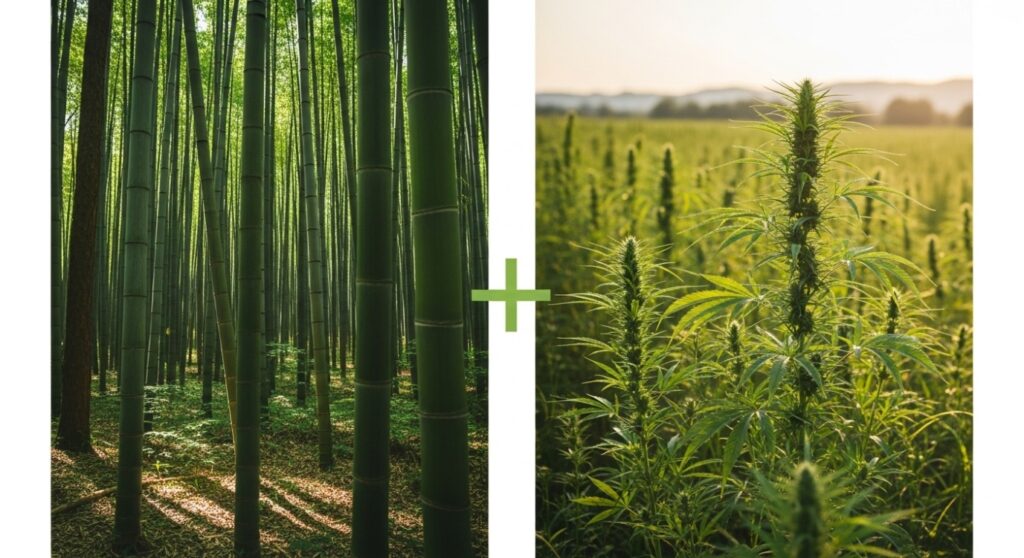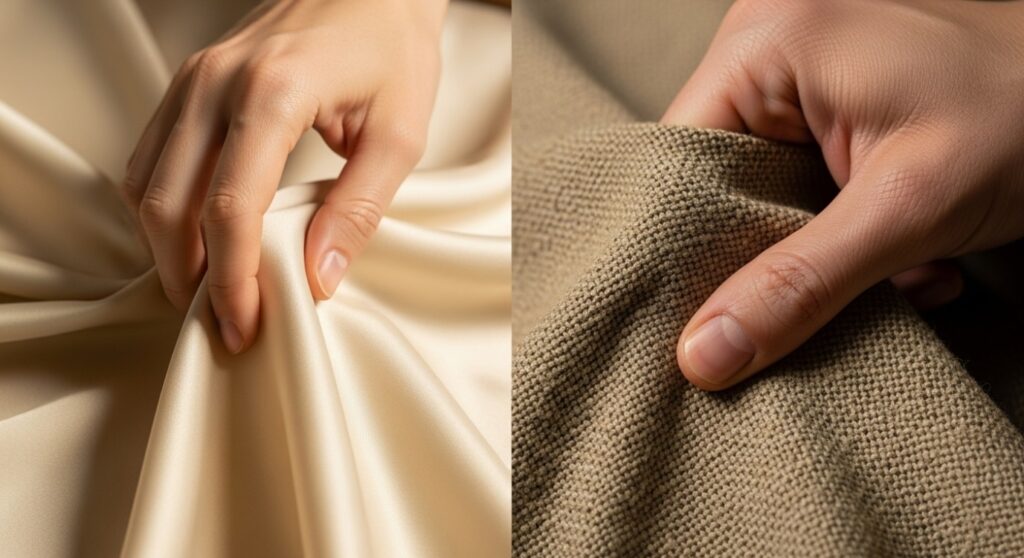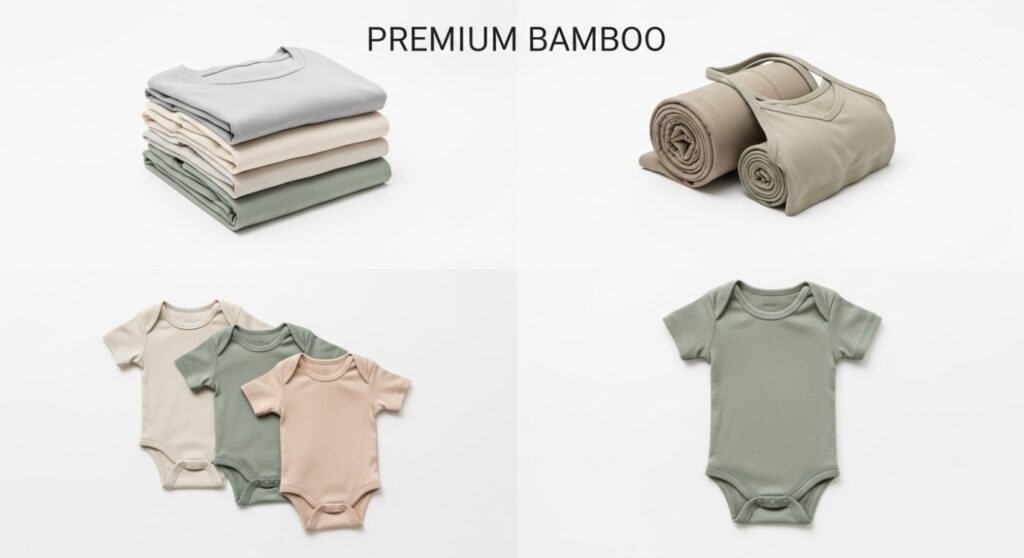Editor is Note: As a fashion or textile brand owner, choosing the right raw material is a key strategy that will determine your brand is success, customer trust your position in the market. This detailed analysis will help you make a strategic decision on which bamboo and jute fabrics to choose for your 2025 product line.
Not just a fabric, it is a business strategy
As we head into 2025, consumers are more aware than ever. They want to know the story behind the products they buy and their environmental impact. Bamboo and jute fabrics are at the heart of this shift. But for your brand, it is more than a trend; it is an investment, a brand positioning a market opportunity.
In this article, we’ll take a deeper look at these two fabrics from a business owner is perspective:
- Environmental profile: Which is truly green? Which is at risk of “green washing”?
- Touch & performance: Which fabric is right for your product?
- Product-market fit: Which will be most profitable for which product line in 2025?

Environmental profiles: opportunities and brand risks

The credibility of your brand depends on the transparency of the ingredients you choose.
Bamboo: Speed, Softness and a Warning
Benefits for Business:
- Faster Harvest: Bamboo is one of the fastest growing plants in the world. This guarantees that raw materials are always on hand (Supply Chain Stability).
- Low cultivation costs: Since pesticides and fertilizers are not required, farming costs are low.
Brand Risk to Handle:
Hemp: The Business Value of Real Sustainability Benefits for Business
Benefits for Business:
- Good Brand Story: Hemp is a crop that takes in more carbon than it gives off. As it grows, it takes in CO2 from the air. This is a strong point for your marketing story.
- Regenerative Agriculture: Hemp enriches the soil. This helps create an image of a “brand that saves the earth.”
- Holistic Use: Since every part of the plant (fiber, seed, leaf) is used, it is a “zero-waste” material.
Challenge to Overcome:
The initial production cost may be a bit high, but its longevity and premium market value will make up for this investment.
Touch and Performance: The Perfect Fit for Your Product

The ultimate customer experience lies in the feel of the fabric.
Bamboo softness: The perfect choice for premium and luxury segments
Feel: A very soft feel like a mix of silk and cashmere.
Performance: High Breathability, Moisture-wicking antibacterial properties.
Ideal Product Categories:
- Intimate Apparel & Underwear
- Active wear & Yoga Clothing
- Baby Clothing
- Luxury Bedding & Towels
Hemp is durability: An investment in durable products
Feel: Slightly stiff like linen at first, but softens with every wash.
Performance: 3x stronger than cotton, naturally protects against UV rays has a very long lifespan.
Ideal Product Categories:
- Denim & Jeans
- Jackets & Outerwear
- Tote Bags & Canvas Shoes
- Upholstery & Home Furnishings
2025 Product-Market Fit: Mapping Your Path to Profitability

Launching the right product in the right market is the key to success.
| Feature | Bamboo-Based Brand Strategy | Hemp-Based Brand Strategy |
| Target Customer | The urban consumer seeking comfort, wellness affordable luxury (Gen Y, Gen Z). | The value-driven consumer seeking durability, authenticity true sustainability. |
| Brand Positioning | “Affordable Luxury,” “Everyday Comfort,” “A Wellness Brand.” | “Built to Last,” “Earth-Positive,” “A Conscious Investment.” |
| Marketing Angle | “Feels like a second skin,” “The softest shirt you’ll ever own.” | “Buy it once, wear it for life,” “Your clothes can have a positive impact.” |
| Core Product Line | T-shirts, loungewear, underwear, bedding. | Jeans, work wear, canvas bags, jackets. |
| Profit Margin Profile | Mid to High (Often volume-driven). | High (Driven by value, durability brand story). |
The Final Verdict: What is Your Brand is DNA?
The right question isn’t “Which fabric is better?” The right question is: “Which fabric is right for my brand?”
- If your brand strategy is to target a broad market with products defined by supreme comfort, softness accessible luxury, then a responsibly-sourced bamboo (like Lyocell) is your winning choice.
- If your brand strategy is to build a loyal, niche audience around the values of durability, authentic sustainability long-term value, then hemp is the foundation for your success.
Call to Action:
We hope this advice helps you use data to pick your 2025 product line. Contact our textile experts now for a more in depth discussion about supply chain logistics, costs and how to choose materials that fit your brand goals.
Common Questions (FAQs)
1. What kind of cloth is cheaper to create in huge amounts?
The cost of making bamboo viscose may be a little lower than the cost of making hemp at first. Hemp on the other hand is more durable and can typically attract a higher price which leads to a higher long term Return on Investment (ROI).
2. What kinds of certifications should I look for in a supplier?
Brand reputation depends on certifications that can not be changed.
• For Bamboo: Check for FSC (Forest Stewardship Council) certification to make sure the wood was cut down in a responsible way, and for OEKO-TEX Standard 100 to make sure the fabric doesn’t have any dangerous chemicals in it.
• For hemp: The best way to check if it was grown in an organic way is to look for GOTS (Global Organic Textile Standard) or USDA Organic certifications.
3. How reliable are the supply chains for these materials?
The bamboo supply chain is now more developed and extensive. As rules throughout the world become less strict, hemp farming is rising quickly, but its supply chain is still developing. It’s important for both materials to work with a trusted, open supplier to make sure they stay the same and are of high quality.
Learn More: Cotton polyester blend fabric: reliable, versatile, and ready for real production

